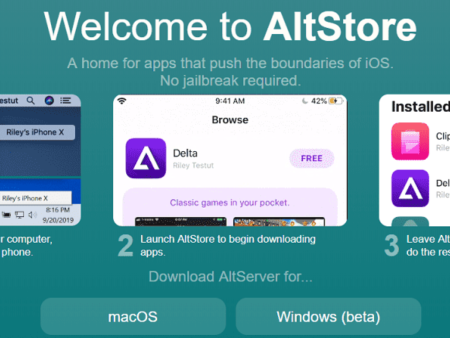The Art of Crafting an Exceptional Mobile App User Experience
-
20/03/2023
-
825
-
0
Crafting an exceptional mobile app user experience is an art that requires a combination of creativity, technical expertise, and a deep understanding of user behavior and preferences.
Related posts
The Power of In-App Advertising: Master Your Mobile App Revenue Stream
Strategies for Effective App Store Review Management
1. Understand Your Mobile App User Experience
Design Intuitive Navigation: Design navigation menus and UI elements that are intuitive and easy to use. Users should be able to navigate the app without confusion or frustration.
Use Clear and Concise Language: Use simple language in your app's interface and instructions. Avoid technical jargon or complex terms that may confuse users.
Ensure Responsive Design: Ensure your app is responsive and works well on different devices and screen sizes. Consider factors such as touchscreen navigation and landscape vs. portrait orientation.
Use Feedback and Error Messages: Give users feedback when interacting with your app. This can include confirmation messages when an action is completed or errors when something goes wrong.
Make it Accessible: Ensure your app is accessible to all users, including those with disabilities. This can involve designing for high contrast, providing alternative text for images, and ensuring your app is compatible with screen readers.
Test for Usability: Test your app's usability with real users to get feedback on the user experience. This can involve conducting usability testing sessions or using analytics tools to track how users interact with the app. Use the feedback to make improvements and refine the app's usability.
2. Focus on Usability
Usability is an essential element of any successful mobile app. A usable app is intuitive, easy to navigate, and provides a seamless user experience. A focus on usability can lead to higher engagement rates, increased top app keyword ranking, and, ultimately, more successful apps.
One critical aspect of usability is intuitive navigation. Users should be able to navigate the app without confusion or frustration. Navigation menus and UI elements should be designed to guide users through the app's features naturally and intuitively.
Another critical element of usability is clear and concise language. The language used in the app's interface and instructions should be simple and easy to understand. Avoiding technical jargon or confusing terms can improve the app's usability and reduce frustration.
Providing feedback and error messages can also improve the app's usability. Users should receive confirmation messages when they complete an action or error messages when something goes wrong. This provides clarity to users and helps to prevent user frustration.

Focus on Usability, Source: Asoservice.com
Making the app accessible to all users, including those with disabilities, is also essential for usability. Designing for high-contrast, providing alternative text for images, and ensuring the app is compatible with screen readers can improve its accessibility and make it easier for users to interact.
Overall, a focus on usability is essential to creating a successful mobile app. By designing intuitive navigation, using clear language, ensuring responsive design, providing feedback and error messages, making the app accessible, and testing usability, developers can create apps that users love and continue to use.
3. Keep It Simple of Mobile App User Experience
Understanding your mobile app user experience is crucial to creating a successful and engaging app. User experience (UX) is users' overall experience when interacting with your app, from the first download to daily use. By understanding your users, you can create a mobile app that meets their needs and exceeds their expectations.
Creating user personas can also help you understand your app's user experience. User personas are fictional representations of your target audience, including age, occupation, behavior patterns, and goals. By creating user personas, you can get a better sense of the needs of your users and design an app that meets those needs.
Analyzing user feedback can also help you understand your mobile app user experience. Listening to user feedback through app reviews, social media, or customer service interactions can help you identify common pain points or areas for improvement. Addressing these issues can improve the user experience and increase user satisfaction.
Using analytics tools is also essential to understanding your mobile app user experience. Analyzing this data lets, you make informed decisions on improving your app's user experience.
Monitoring your app's performance is also critical to understanding your mobile app user experience. Metrics such as load times, crashes, and errors can help you identify technical issues that may impact the user experience. Addressing these issues can improve the app's performance and increase user satisfaction.
Testing your app with real users is also crucial to understanding your mobile app user experience. By testing your app with real users, you can get usability and user experience feedback. This feedback can help you improve before launching the app, ensuring a positive user experience.
Understanding your mobile app user experience is essential to creating a successful and engaging app. By conducting user research, creating user personas, analyzing user's app ratings, using analytics tools, monitoring app performance, and testing with real users, you can create an app that meets the needs of your users and provides a positive user experience.
4. Create Delightful Interactions
Creating delightful interactions is critical to designing a successful mobile app user experience. Delightful interactions refer to when the app engages the user, surprises them, or makes them feel satisfied with its performance. You can increase user engagement and satisfaction by designing delightful interactions, leading to a more successful app.
One way to create delightful interactions is by designing micro-interactions. Micro-interactions are small, often subtle, moments within the app that serve a specific purpose, such as liking a post or submitting a form.
Surprise and delight are other strategies for creating delightful interactions. Surprising the user with unexpected features or interactions can make the app more memorable and engaging. For example, an app could provide a fun Easter egg or hidden feature the user discovers through exploration. This can make the app feel more playful and engaging.
Creating a seamless and intuitive user interface (UI) is crucial to creating delightful interactions. A well-designed UI that is easy to navigate and provides clear information can make the app intuitive and satisfying. This can lead to a more positive user experience and increased engagement.
Designing interactions that make the user feel accomplished or rewarded can be a powerful way to create delightful interactions. For example, an app could provide badges or rewards for completing specific tasks or achieving milestones. This can make the user feel a sense of accomplishment and encourage them to continue using the app.
In conclusion, creating delightful interactions is critical in designing a successful mobile app user experience.
5. Pay Attention to Visual Design
Visual design is essential to creating a successful mobile app user experience. Visual design refers to the aesthetic appeal of the app, including the use of color, typography, images, and icons. By paying attention to visual design, you can create an app that is visually appealing, easy to use, and memorable. One of the key elements of visual design is color. Choosing the right color palette can set the tone for the app and create a cohesive look and feel.
Typography is another important aspect of visual design. Choosing the right font and text size can make the app easier to read and navigate. It's essential to choose a legible font on small screens and use font sizes that are easy to read. Consistency in typography can also create a cohesive look and feel throughout the app.
Images and icons are also crucial elements of visual design. High-quality images make the app look more professional and engaging, while icons help users navigate and understand its features. It's important to choose images and icons relevant to the app's content and use them consistently throughout the app.
Creating a visual hierarchy is also important in visual design. A visual hierarchy refers to how the app's content is organized and prioritized. For example, important information or features should be more prominently displayed than less critical information. This can make the app more accessible and help users quickly find what they want.
In conclusion, visual design is crucial in creating a successful mobile app user experience. By choosing the right color palette, typography, images, and icons, creating a visual hierarchy, and considering accessibility, you can create an app that is visually appealing, easy to use, and memorable.
6. Test and Iterate for Mobile App User Experience
Testing and iteration are essential to creating a successful mobile app user experience. Testing allows you to gather user feedback and identify any issues or areas for improvement, while iteration involves making changes and improvements based on that feedback. You can read Microsoft store app reviews to have more information.
One of the key ways to test and iterate is through user testing. User testing involves observing users interacting with the app and gathering feedback on their experience. This can be done through various methods, such as in-person testing, remote testing, or surveys. User testing can help identify usability issues or areas for improvement that may be absent during the design phase.
Analytics can also be used to test and iterate. Analytics data can provide insights into how users interact with the app, such as which features are used most frequently or where users are dropping off. This data can help identify areas for improvement and guide the iteration process.
Prioritizing feedback and making iterative changes based on the most pressing issues is essential. This can involve making small changes or redesigning entire features based on feedback. It's important to communicate changes to users and gather feedback on the effectiveness of those changes.
In conclusion, testing and iteration are essential to creating a successful mobile app user experience. By conducting user testing, analyzing analytics data, prioritizing feedback, making iterative changes, and using A/B testing, you can identify areas for improvement and create an app that meets the needs and expectations of your users.
Conclusion
In conclusion, by focusing on usability, understanding the user experience, creating delightful interactions, paying attention to visual design, and testing and iterating, mobile app designers and developers can master the art of crafting exceptional user experiences that engage and delight users.
Related posts
https://asoservice.com/top-app-keyword-ranking
https://asoservice.com/keyword-app-installs
Thanks so much for reading this article.
Source: https://asoservice.com/




































Leave a Reply
Your e-mail address will not be published. Required fields are marked *